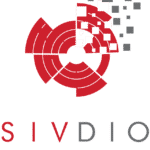Visualizing Project Management Work Breakdown Structure in Malaysia
A project manager may very well spend 90% or more of his or her time communicating. There appears to be a direct correlation between the communications process and project performance. Many project managers miss out on a simple and often overlooked opportunity. This is the utilization of visuals to enhance project communication.

Visual aids can significantly improve a presentation and give it a visual dimension. They give an audience the ability to perceive a message using two different senses. The following are some of the benefits: enlivening a presentation, which aids in capturing and maintaining an audience’s attention. Visuals play a significant role in project management’s daily tasks.
The objectives of a project are not always clear at the outset. By grouping and normalising the areas within and outside of scope, a project manager utilise visuals to assist in defining the project’s specifics. Additionally, it captures all aspects of the discussion and organises them into a separate list for later resolution.
By having both a visual and verbal reference and incorporating this work directly into the project or as an appendix, the overall team can identify a large number of organisational and task dependencies.
If a picture is truly worth a thousand words, then effective visuals can significantly aid the project manager in establishing a common understanding throughout the project's stages.
Method of tooling and technique in effective visualization varies depending on the critical depth of information needed in every project.
By having both a visual and verbal reference and incorporating this work directly into the project or as an appendix, the overall team can identify a large number of organisational and task dependencies.

Method 1 – Aerial imagery
Aerial imagery plays a major role in collecting data from elevated positions that is beneficial for investigation, analysation, monitoring and decision making. With the ongoing advancement in the aerial image capturing equipment such capturing accurate and precise imagery is viable

Method 2 – Jobsite Documentation via photos and videos
Jobsite monitoring always heavily rely on visual senses, it helps keep tracking, increasing safety, reducing default quality risk and also providing elementary vehicles presenting high quality deliverables at the end of each project. With the era of digitizing photos and videos, this method covers many key areas.

Methods 3 – Augmented & Virtual Reality
Utilizing augmented and virtual reality in every stage of the construction provides tremendous benefits especially to the efficiency and accuracy for all stakeholders involved. From the capturing process, it generates millions of data points that are able to be continually measured and compared as the progression moves forwards.Plus this model generated is useful for BIM modelling.
From defines methods and upon the implementations, it displays an extra strength in developing shred vision among the stakeholders.
Utilizing visuals in a balanced manner significantly aids in the communication effort associated with project management. The methods outlined above are intended to communicate a concept that is evolving in lockstep with the audience, as opposed to the more conventional methods of communication via writing (formal or informal) or orally (formal or informal). By utilising visuals rather than a written technique, you can provide the project team with the breakthrough or grounding necessary to successfully complete the project, as communication skills development is a lifelong process.
The project manager has a variety of communication techniques available to him or her, and the more techniques brought to the table, the more options for expressing or comprehending a point made.
Are you interested in learning how technology can assist you in enhancing your visualisation and comprehension of visual documentation processes? Sivdio Imaging solutions assist your organisation in analysing and selecting the most reliable mechanism for takeoffs in visual documentation for projects.


